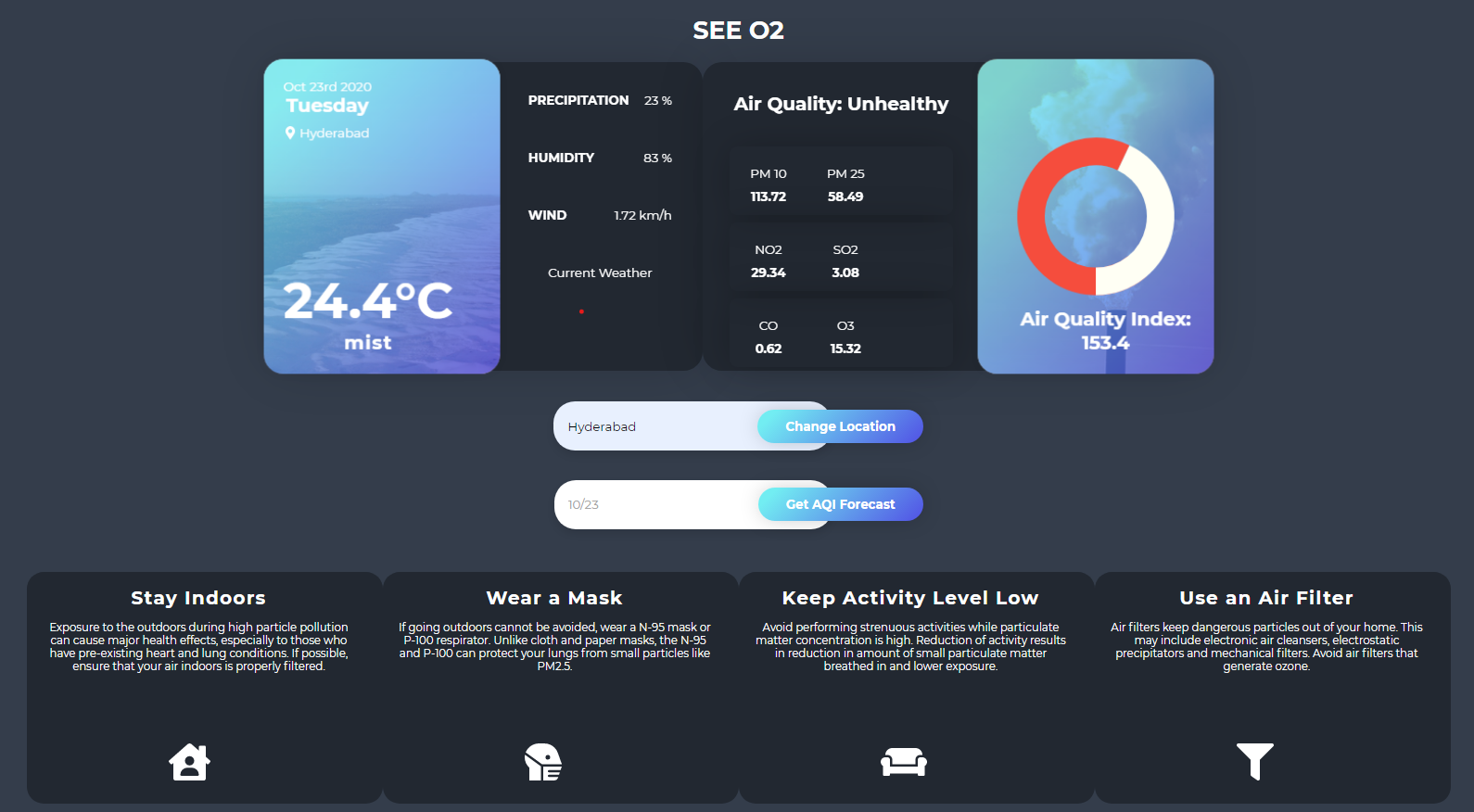India suffers over 1 million pollution deaths per year, the most in the world. If Indian air quality was at the same level as the United States, the average life expectancy in India would increase by 1.7 years. Without accurate real-time and forecasted air quality, residents don't have the tools they need to make decisions for their health.
This is the problem my team and I tackled during HackNC 2020 with our hack, SeeO2. We wanted to create a simple way for users to see past, present, and future air quality information for where they live. We also wanted to provide tips based on the air quality level, like staying indoors or buying a filtration system, that users could follow to protect their health.

The front end was done in React, with some components being borrowed from other projects and repurposed. We got current information from Open Weather Map and Ambee APIs. For past air quality and future predictions, I created our own API in Python using Pandas, Flask, and SciPy, which analyses a Kaggle Data Set and is hosted on Heroku. You can check out our work on Devpost and GitHub.
We were very satisfied with the result and happy that the app won several awards, including Best Hack for Sustainability and Top 20 Hack. In the future, we may expand the app's functionality by providing interactive plots of air quality over time and using more advanced prediction methods.